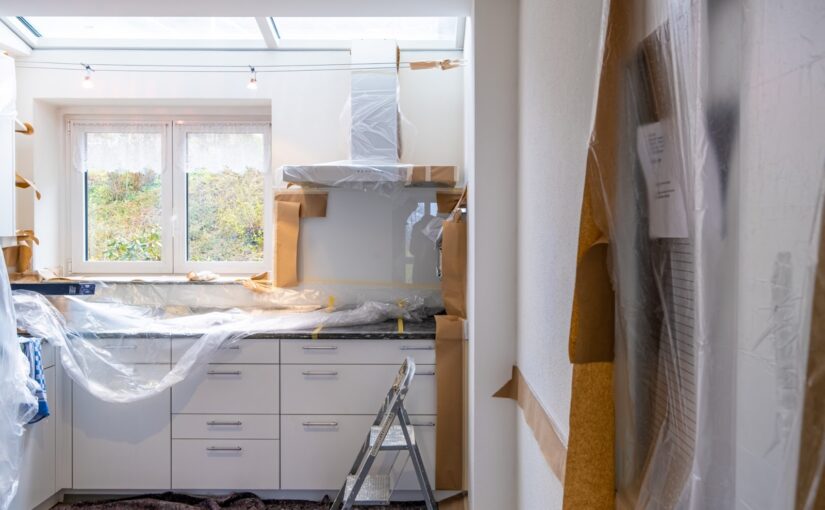Your next home project is going to improve your home, whether it’s small or large. Maybe you plan to update only one thing, like the flooring in your kitchen, or maybe you plan to do a large-scale renovation of the entire kitchen. Unfortunately, renovating any part of your home isn’t easy or cheap. However, it can increase your home’s value if you plan to move.
To effectively plan your next home project, you need a budget, and to start a budget, you need a plan of action. Here’s how you can create a smart budget and make the right decisions when it comes to home projects.
Find Out How Much the Project Cost
Everything you do to your home costs money– from painting its exterior to doing a full renovation. All home projects will come at different price points depending on what the project is and the types of help you’ll need. For example, installing a new bathroom counter will be cheaper than renovating the entire bathroom. If you do choose more renovations, you can expect to pay thousands of dollars.
Many factors go into the cost of a home project, including:
- Size of the project
- Room size
- Type of work needed
- Cost of materials
- Cost of labor
The easiest way to create a budget is to write down all of the projects you want then price them out. You can do this by getting bids for each project and rank your projects according to your priorities. Next, you’ll need to budget out the projects you choose as a top priority.
How Much Should You Spend?
We can’t tell you how much to spend on a renovation or home project, but spending too much won’t add as much value to your home as you think because people will be paying for your home based on ones of similar size, the number of bedrooms, and the number of bathrooms in your area. If you turn your house into a multimillion-dollar house in a neighborhood where homes cost a fourth of that, you may not be able to sell your house for the asking price too easily.
As a general rule, try not to spend half of what your home is currently worth for small renovations like one or two rooms. Instead, look at your monthly budget and decide what you can afford and how much value it can bring to your home.
How to Create a Home Project Budget
To start your project, you can use these steps to create a budget:
- Prioritize
Remember that list we mentioned earlier? Get that out and begin writing down all of the projects you want to be done on your home. Make sure to list the ones that affect your living situation first. For example, if you have dangerous electrical wiring, you should make that your top priority before changing out the flooring because it can affect your safety.
You should also take care of any home maintenance first, such as plumbing issues, or fixing things around the house so you can fully enjoy the results of your home project. There’s no use in renovating a bathroom when the toilet doesn’t work properly.
If you don’t have any rooms with major issues but want to make some changes, write down the changes you want to make that can add value to your home. If you plan on living in your home for the rest of your life, you may choose to go with renovation projects you want instead of ones a potential homebuyer would want.
- Outline Estimates
Now it’s time to do a little math. Once you’ve decided which home project will be your top priority, you’ll need to break down the cost of every little thing that goes into it. This part will take a lot of your time because you’ll need to do research.
Unfortunately, you won’t be able to get exact costs until you talk with the contractors you’ll be working with for your home project. However, you can search online to get ballpark estimates so you know what to expect in terms of estimates and budgeting.
When it comes to spending money on maintenance projects, you can use the same 1% rule that landlords use. According to SmartMove, “Many professional property managers use what they call the 1% rule: One percent of the total property value should be set aside to address rental maintenance expenses.”
Therefore, if your house is worth $300,000, then you should set aside $3,000 for maintenance costs before moving onto your next home project.
In your budget breakdown, make a chart of the name of the cost, what percentage of the budget it takes up, and what the estimate will be. Then, you can total it up and get a final number for your overall budget.
Taking this step and doing research gives you a better idea of how much each part of the project will cost. It can also help you figure out ways to cut costs in some areas so you can spend more in others. For example, if you need a certain countertop for your kitchen, you may be able to find cheaper flooring with the right research.
- Collect Bids

Now that you have realistic prices in mind, it’s time to talk to a contractor. You can ask around or search online for these professionals. Try to find at least three contractors in your area with good reviews and request project bids and timelines. This allows you to compare pricing.
Beware of the lowest bid because you might end up paying for a contractor that doesn’t get the project done on time or becomes unprofessional midway through the project. If you receive a bid that is thousands of dollars lower than the estimated budget you put together, then this might be a red flag. However, if your estimate is only a few hundred dollars off the bid and it’s a large project, you may have simply miscalculated. Remember, the estimate you put together is not the exact cost you can expect to pay.
Never DIY Home Projects
Unless you’re a contractor yourself, you should never try to take on a large DIY project yourself to cut costs. While you may think you’re saving yourself tens of thousands of dollars, you could actually be costing yourself more when you realize you made a mistake and need to hire a professional to fix those errors.
Matt Casadona

Matt Casadona has a Bachelor of Science in Business Administration, with a concentration in Marketing and a minor in Psychology. Matt is passionate about marketing and business strategy and enjoys San Diego life, traveling, and music.
